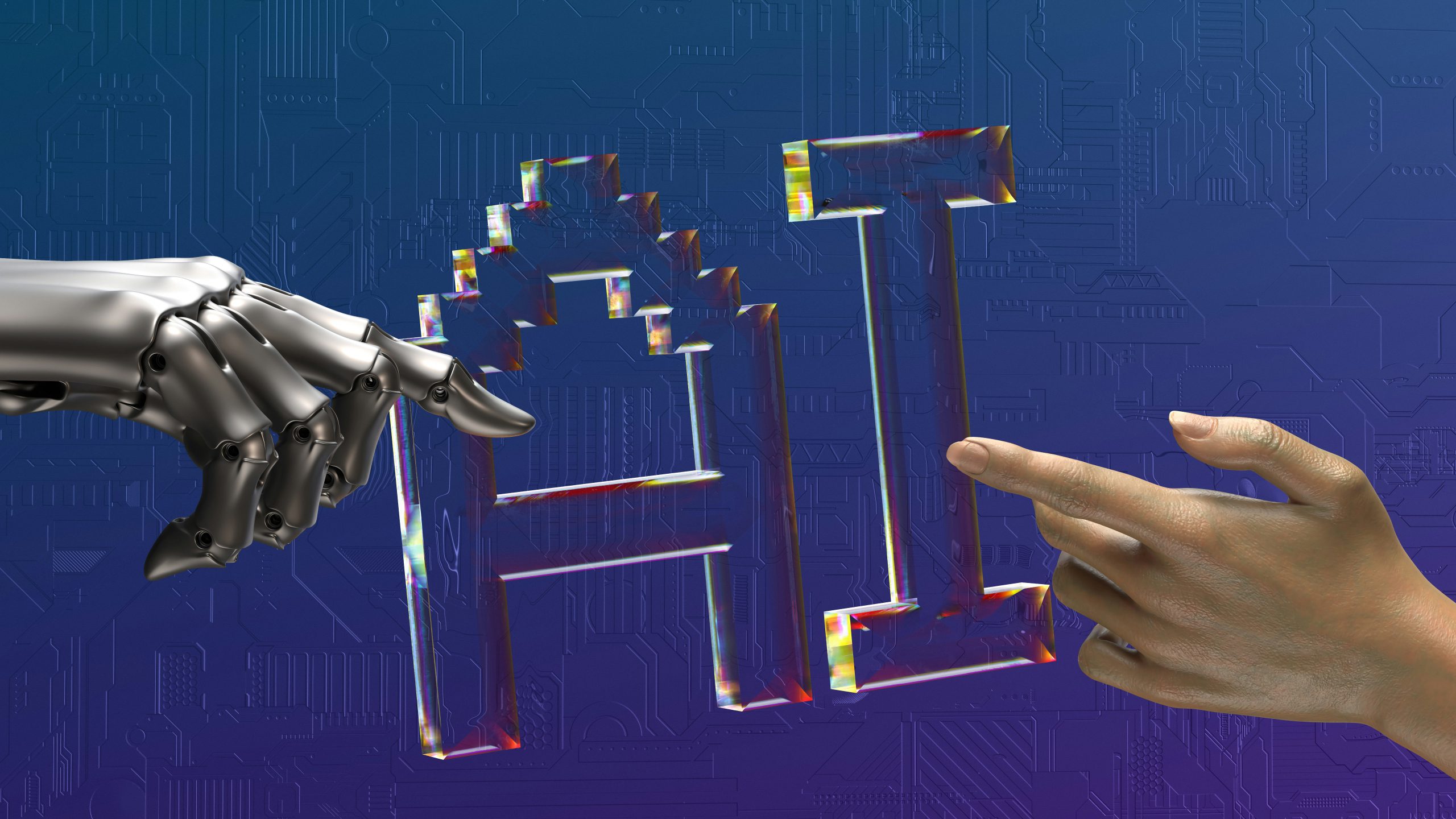What is AI transformation?
AI transformation refers to the strategic integration of artificial intelligence into an organisation’s operations, processes, culture and workforce (AI Transformation: AI for Digital Transformation | IBM). It goes beyond simply adopting AI-powered tools – it requires rethinking how work gets done, redesigning job roles, and leveraging AI to enhance decision-making, efficiency, and innovation.
As AI capabilities advance, businesses must prepare for fundamental shifts in how work is structured. The focus is not only on automation but also on augmentation – where AI enhances human skills rather than replacing them entirely. Organisations that proactively embrace AI transformation will be better positioned to gain a competitive edge and future-proof their workforce.
How is AI transforming the workplace?
AI is already reshaping how work gets done, improving efficiency, decision-making, and the management of physical and digital workplaces.
- Automation of repetitive tasks: AI is streamlining administrative work by handling tasks such as scheduling, data entry, and transcription. AI-powered assistants can now generate meeting notes, summarise emails, and automate customer interactions. For example, Klarna introduced an AI chatbot that handled over two-thirds of customer enquiries within its first month, reducing response times and freeing human agents to focus on complex issues, improving both efficiency and customer experience. (Klarna AI assistant handles two-thirds of customer service chats in its first month | Klarna International).
- Enhancing decision-making: AI-driven analytics tools process vast amounts of data, helping organisations make faster, evidence-based decisions. In workplace strategy, predictive AI models can anticipate peak office usage, recommend desk allocations, and support hybrid working policies, ensuring space is used efficiently and employee needs are met.
- Optimising workplace management: AI is transforming how organisations use office space by analysing real-time occupancy data. Smart systems can adjust heating, lighting, and room bookings automatically, reducing costs and improving employee comfort. AI-powered workplace analytics also help businesses redesign their work environments to boost collaboration and productivity.
This evolving role of AI is not just about automation – it’s about augmenting human capabilities, creating smarter, more adaptable workplaces that improve both efficiency and employee experience.
How will AI impact jobs?
Through our research on the impact of AI on jobs, utilising the AWA AI DNA Profiler, we believe that the impact can be categorised into five main areas:
- No change: Some job roles will remain largely unaffected by AI, as they require uniquely human skills or are not easily automated, such as doctors, nurses and therapists.
- Automation: AI will replace many tasks typically performed by certain job roles, particularly those involving repetitive and routine work. For example, data entry clerks and payroll processors are at higher risk of automation.
- Capacity enhancement: AI will take over grunt work, such as drafting emails or structuring presentations, allowing employees to focus on refining and enhancing AI-generated outputs. Examples include marketing professionals, who may use AI-generated content as a starting point for campaigns.
- Leap in efficiency: AI will enable workers to complete tasks more quickly and accurately, increasing overall productivity. For instance, AI-powered research tools can summarise reports in seconds, allowing knowledge workers, such as financial analysts, to make faster, data-driven decisions.
- Disruption: AI will significantly alter some job roles, requiring them to evolve or be redefined. A clear example is, as shown above, customer service, where AI chatbots handle routine inquiries, while human representatives focus on complex, high-value interactions.
It’s important to note that these classifications are not mutually exclusive. Many roles will experience a mix of automation, capacity enhancement, and efficiency improvements, reshaping how work is done rather than eliminating entire professions. This shift presents an opportunity for organisations to rethink the skillsets of their workforce and how work is best structured in the AI era.
How does AI improve productivity?
AI enhances productivity in multiple ways, helping organisations operate more efficiently and effectively (Can AI actually increase human productivity? | World Economic Forum).
- Time savings: AI automates time-consuming tasks such as scheduling, document processing, and data analysis, reducing administrative burdens.
- Enhanced accuracy: AI minimises human errors in data entry, forecasting, and reporting, leading to more reliable outputs.
- Data-driven insights: AI can analyse vast datasets to identify patterns, trends, and opportunities, enabling organisations to make smarter, faster decisions.
- Process optimisation: AI-driven automation streamlines workflows, eliminating bottlenecks and ensuring resources are allocated more effectively.
What actions do organisations need to take now to get ahead of the curve?
To successfully navigate AI transformation, organisations must take proactive steps. Here is a roadmap to help you embed AI into your everyday business operations:
- AI Opportunity Assessment: Start by understanding where AI can have the biggest impact in your organisation. This means aligning AI opportunities with strategic goals, assessing the current state of readiness, and identifying key roles or processes that could benefit. Tools like our AWA AI DNA Profiler can help pinpoint where to begin and what skills may need to evolve.
- AI Adoption Plan: Once you understand where AI can deliver value, build a clear plan for adoption. Identify the specific use cases – what AI will be used for, when it will be implemented, and how success will be measured. It’s important to map out both the technical and cultural changes required to embed AI effectively into day-to-day operations.
- AI Pilots: Before going organisation-wide, test your assumptions through targeted pilots. Select priority areas, build business cases, and create a network of super users who receive focussed training and implementation support. This helps to build internal confidence, refine your approach, and surface any challenges early on.
- AI Roll-Out: With tested pilots and a refined approach, scale your AI solutions across the organisation. Ensure there are strong feedback loops in place, provide ongoing support and upskilling, and embed AI tools into wider workplace strategies. Success will depend on consistent communication and inclusive change management.
Final thoughts
AI transformation is not a distant future – it’s happening now. Organisations that embrace AI strategically will unlock new efficiencies, enhance workforce capabilities, and remain competitive in an evolving business landscape. By taking proactive steps today, businesses can harness AI’s potential while ensuring a smooth transition for their workforce.
If you’re interested in learning how to embrace AI into your organisational strategy, contact the AWA team today.
FAQs
-
No, AI is more likely to augment human work rather than replace it entirely. While some repetitive tasks will be automated, AI will also create new opportunities and job roles that require human creativity, problem-solving, and emotional intelligence.
-
AI can analyse vast amounts of data quickly, providing real-time insights that help organisations make better strategic decisions. Predictive analytics can improve forecasting, risk management, and operational efficiency.
-
Organisations should focus on upskilling their people in digital literacy, AI collaboration, and critical thinking. Investing in training programmes and redesigning workflows to integrate AI effectively will be key to a successful transformation.




